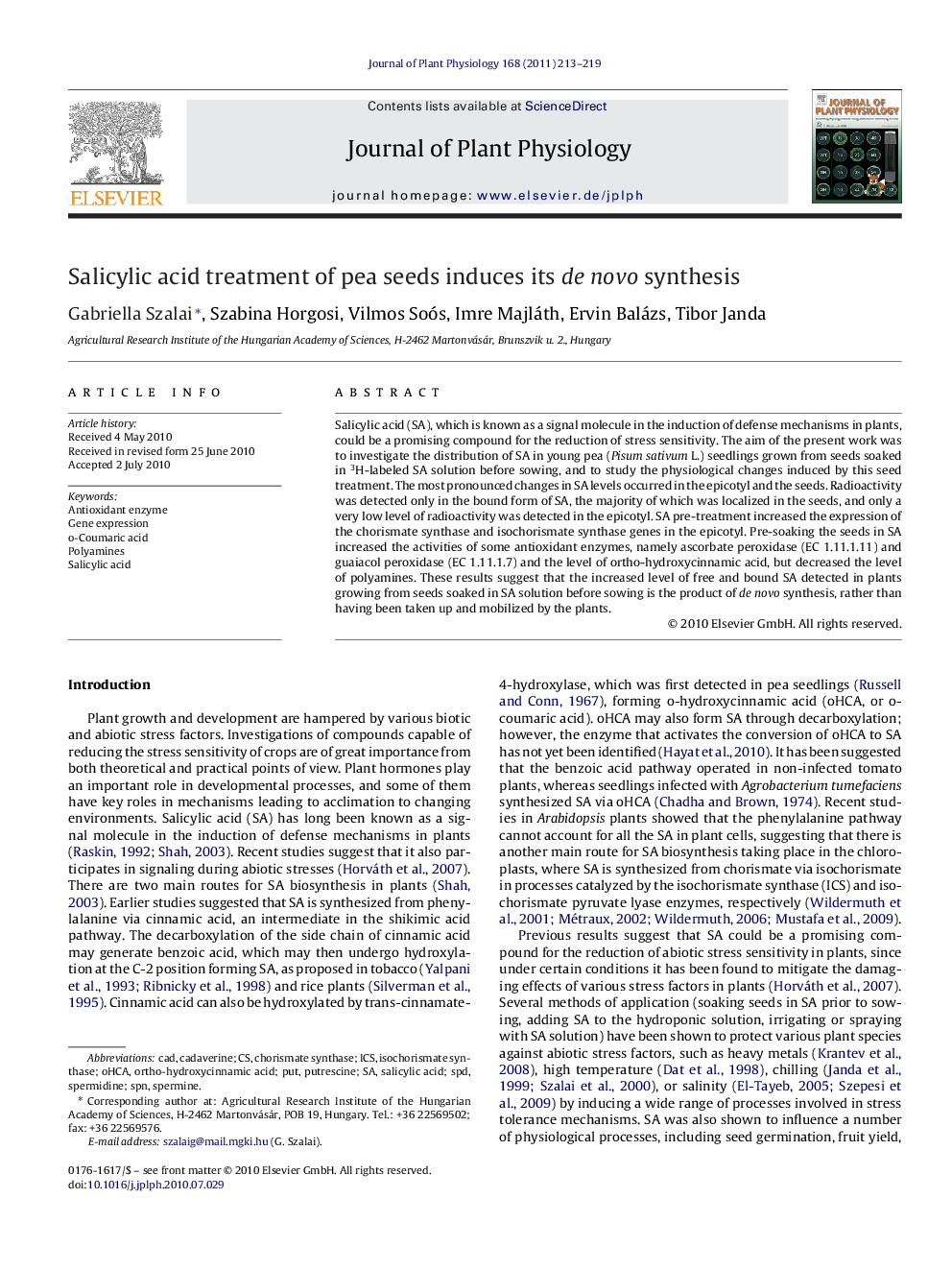| Article ID | Journal | Published Year | Pages | File Type |
|---|---|---|---|---|
| 2056879 | Journal of Plant Physiology | 2011 | 7 Pages |
Salicylic acid (SA), which is known as a signal molecule in the induction of defense mechanisms in plants, could be a promising compound for the reduction of stress sensitivity. The aim of the present work was to investigate the distribution of SA in young pea (Pisum sativum L.) seedlings grown from seeds soaked in 3H-labeled SA solution before sowing, and to study the physiological changes induced by this seed treatment. The most pronounced changes in SA levels occurred in the epicotyl and the seeds. Radioactivity was detected only in the bound form of SA, the majority of which was localized in the seeds, and only a very low level of radioactivity was detected in the epicotyl. SA pre-treatment increased the expression of the chorismate synthase and isochorismate synthase genes in the epicotyl. Pre-soaking the seeds in SA increased the activities of some antioxidant enzymes, namely ascorbate peroxidase (EC 1.11.1.11) and guaiacol peroxidase (EC 1.11.1.7) and the level of ortho-hydroxycinnamic acid, but decreased the level of polyamines. These results suggest that the increased level of free and bound SA detected in plants growing from seeds soaked in SA solution before sowing is the product of de novo synthesis, rather than having been taken up and mobilized by the plants.
